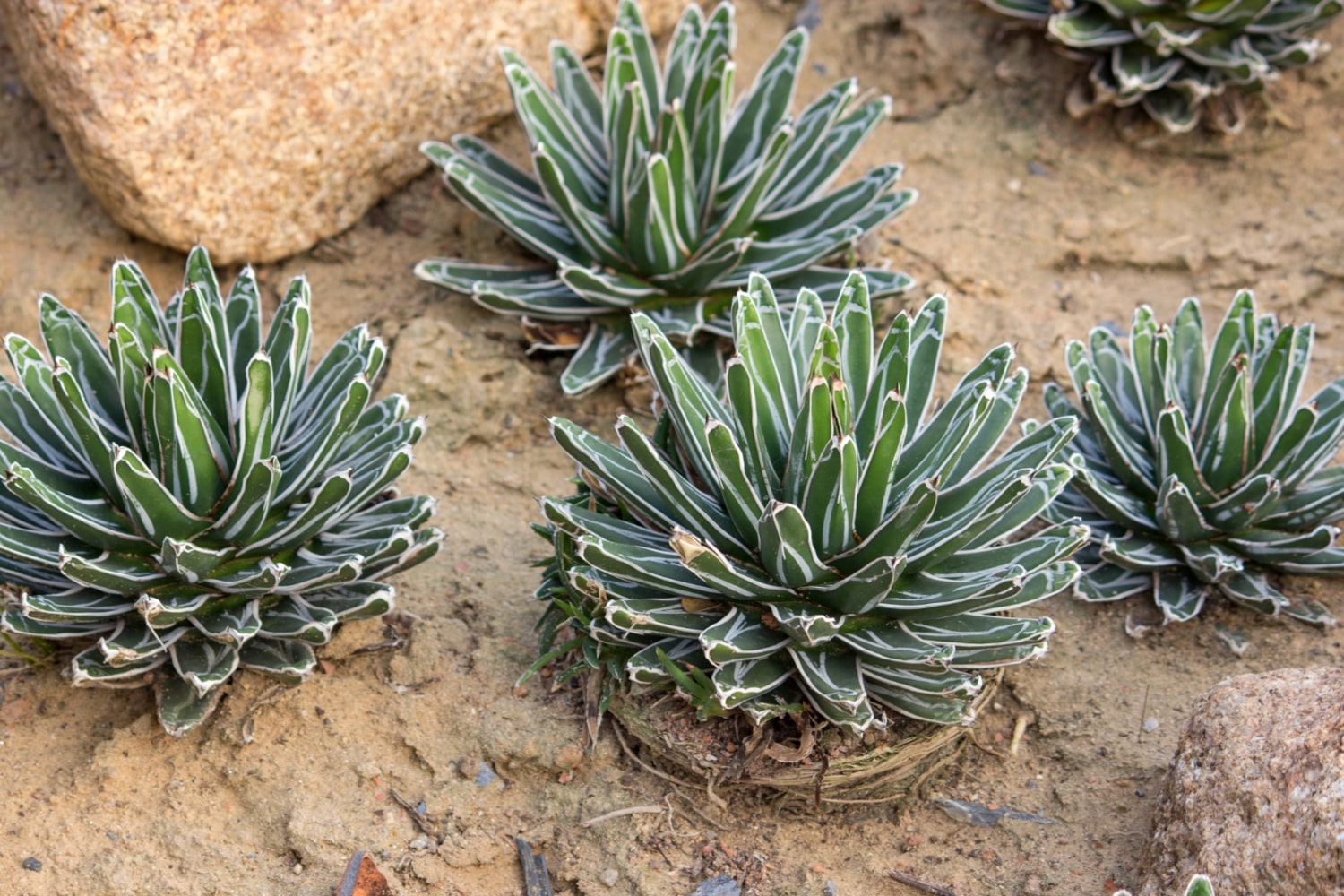Agaves are remarkable plants known for their exotic appearance and their ability to thrive in harsh environments. Often associated with deserts and hot climates, agaves have a rich biological and cultural history that goes far beyond these regions. These plants play an important role in natural ecosystems and have numerous practical uses in human life. This article compiles fascinating and informative facts about agaves that you may not know but will surely expand your understanding of these beautiful plants.
- Agaves belong to the Asparagaceae family and are succulents that store water in their thick leaves. This adaptation allows them to survive in arid regions with minimal rainfall. Their fleshy leaves provide moisture even during the hottest and driest periods.
- One of the most well-known features of agaves is their monocarpic lifecycle — most species flower only once in their lifetime, usually after many years, and then die. This process is called monocarpism. The flowering stalk of an agave can reach heights of 3 to 10 meters, making them true giants in the plant world.
- Agaves are the parent plants of famous alcoholic beverages such as tequila and mezcal, which are made from the fermented sap of certain species. These drinks hold deep cultural significance in Mexico and are widely recognized globally. The cultivation of agaves is economically important in regions where these spirits are produced.
- In nature, agaves play a vital role in preventing soil erosion due to their extensive root systems. They help stabilize soil on slopes and desert terrains. This characteristic makes agaves valuable plants for landscape conservation.
- Agave leaves are often armed with sharp spines that serve as protection against herbivores. These spines can be very sharp and even dangerous to humans. The leaf shape also helps collect water and channel it to the roots.
- Agaves reproduce not only by seeds but also vegetatively through offshoots that grow from the base of the parent plant. This allows them to rapidly colonize new areas and form dense clusters. Such reproduction enhances their survival in harsh conditions.
- Some agave species are used in the textile industry — their fibers are used to make strong ropes, fabrics, and rugs. Historically, these fibers were very important to many cultures in Mexico and South America. Agave fibers are prized for their durability and strength.
- Agaves are widely used in landscaping due to their exotic appearance and low maintenance. They are popular in rock gardens and xeriscaping. Their ability to withstand high temperatures makes them ideal plants for arid regions.
- In ancient cultures, agaves were attributed magical and medicinal properties. They were believed to protect against evil spirits and to heal various ailments. Modern science confirms the presence of beneficial compounds in agave sap and fibers.
- The sap of certain agave species contains natural sugars which, when fermented, produce agave nectar — a natural sweetener with a low glycemic index. Agave nectar has become popular among health-conscious individuals seeking alternatives to regular sugar. It has a sweet taste and is widely used in cooking.
- Agaves are long-lived plants; some species can live 30 to 40 years before flowering and dying. Their lifespan and growth cycles make them interesting subjects for scientific study. After flowering, the plant expends all its energy and dies, leaving behind offshoots.
- In the wild, agave flowers attract a variety of pollinators such as bats, bees, and birds. This is a crucial stage in reproduction, ensuring genetic diversity. Bats, in particular, play a vital role in pollinating nocturnal agave species.
- Agave roots have the ability to retain water, helping the plant survive dry periods. This makes agaves true survivors in desert and semi-desert ecosystems. They contribute to moisture retention in the soil.
- Agaves can regulate their physiological processes to reduce water evaporation through their leaves, enabling them to conserve moisture even on hot days. This adaptation is key to their survival under limited water conditions. They use waxy coatings and other protective mechanisms.
- Some agave species feature decorative leaves in various shades of green, blue, and even purple. This variety makes them popular among gardeners and designers. Leaf shapes can also vary from broad to narrow and curved forms.
- In modern medicine, agaves are used to produce remedies that promote wound healing, improve digestion, and strengthen the immune system. Scientific research confirms the presence of antioxidants and anti-inflammatory compounds in the plant’s sap. This enhances their value in phytotherapy.
- Agave cultivation holds great economic importance in Central American countries where they produce not only alcoholic beverages but also fibers, honey, and cosmetic products. Agaves are a vital part of the agricultural and industrial sectors in the region. Their multifunctionality is highly valued.
- Agaves can grow both in the wild and in cultivated gardens, and they are highly tolerant of different soils and moisture levels. This makes them ideal plants for greening dry and rocky areas. They help prevent erosion and support biodiversity.
These captivating facts about agaves help us better understand the uniqueness and significance of these plants. They reveal the biological and cultural diversity of agaves and remind us of the importance of their conservation. Incredible information about agaves provides a wonderful opportunity to learn more about these elegant and useful plants that play a crucial role in nature and human life.





